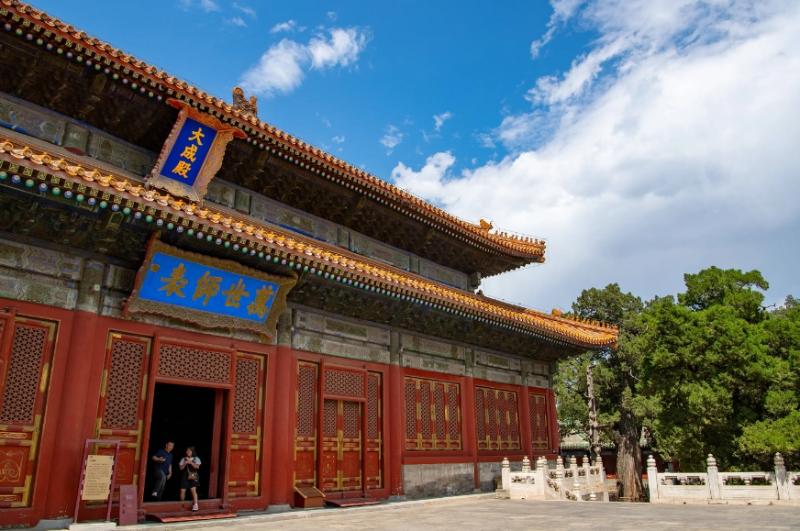Confucius Temple

Nanjing: The Fusion of History and Culture at Confucius Temple
Confucius Temple, located on the Qinhuai River in Nanjing, is a temple built to honor Confucius, the great ancient Chinese thinker and educator, and his disciples. It is not only an important cultural landmark in Nanjing, but also a symbol of the outstanding traditional culture of the Chinese nation, attracting countless tourists from home and abroad to visit.
I. A Long History and Deep Cultural Heritage
1. Establishment and Development
Confucius Temple was first built in the Song Dynasty, initially named "Wenxuan Wang Temple." It underwent renovations and expansions over the centuries, gradually becoming a grand architectural complex dedicated to Confucius. During the Ming Dynasty, Confucius Temple became the most important cultural center in Nanjing, and a bustling district gradually formed around it.
2. Architectural Monuments
Confucius Temple preserves numerous valuable historical relics and buildings, such as the Grand Hall, the Lingxing Gate, the Terrace of Apricot Trees, and the Stele Forest. These buildings are unique in style and exquisite in carving, masterpieces of ancient Chinese architectural art, and important materials for studying the history of ancient Chinese architecture.
3. Cultural Inheritance
Since its establishment, Confucius Temple has always been dedicated to inheriting outstanding traditional Chinese culture. It hosts various cultural events, such as the Confucius Temple Ceremony, the Confucius Birthday Commemoration Activities, and traditional cultural performances, attracting numerous people to participate and carry on Confucian thought and the essence of Chinese culture.
II. A Gathering of Talent, A Cultural Legacy That Flows for Generations
1. A Gathering of Famous People
Confucius Temple has always been a gathering place for cultural celebrities. Numerous literati and scholars have left their footprints here, leaving behind many popular poems and songs. Ming Dynasty literati, calligraphers, and opera performers all left their profound mark on Confucius Temple.
2. An Abundance of Educational Institutions
Many universities are scattered around Confucius Temple, such as Nanjing University and Southeast University, adding a strong academic atmosphere to the area. These universities have also contributed to the cultural inheritance of Confucius Temple, making it a true cultural center.
3. An Artistic Center
Confucius Temple is not only the center of Confucian culture but also the artistic center of Nanjing. The stages, teahouses, and bookstores on the banks of the Qinhuai River provide a platform for artists to showcase their talents, attracting numerous art enthusiasts to watch and gradually forming a unique Qinhuai culture.
III. A Bustling Commercial District, A Fusion of Modern and Traditional
1. Commercial District
A lively and bustling commercial district has formed around Confucius Temple, with various specialty shops lined up side by side, selling a wide variety of goods, attracting tourists from all over to shop.
2. A Food Paradise
Confucius Temple is also a famous food paradise in Nanjing, offering a wide range of local delicacies. From traditional salted duck, duck blood vermicelli soup, to modern internet-famous food, you can find it all here.
3. A Tourist Destination
Today, Confucius Temple has become one of the most popular tourist destinations in Nanjing. Tourists can stroll along the banks of the Qinhuai River, admire the ancient buildings, savor local delicacies, and experience the charm of history and culture.
IV. Future Outlook
Confucius Temple, as a cultural landmark in Nanjing, will continue to play an important role in cultural inheritance, tourism development, and urban construction. In the future, Confucius Temple will further strengthen cultural protection and inheritance, actively explore new models of cultural and tourism integration, and contribute to the development of cultural undertakings in Nanjing and the country as a whole.